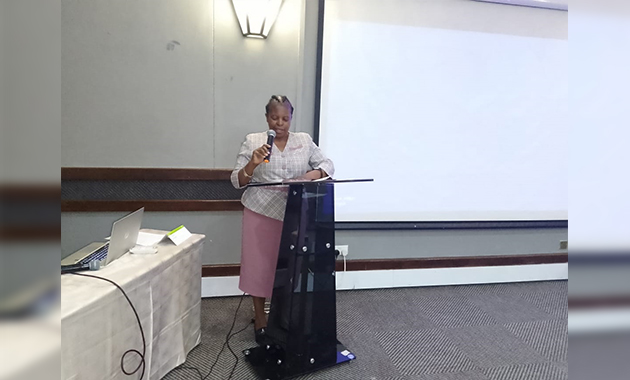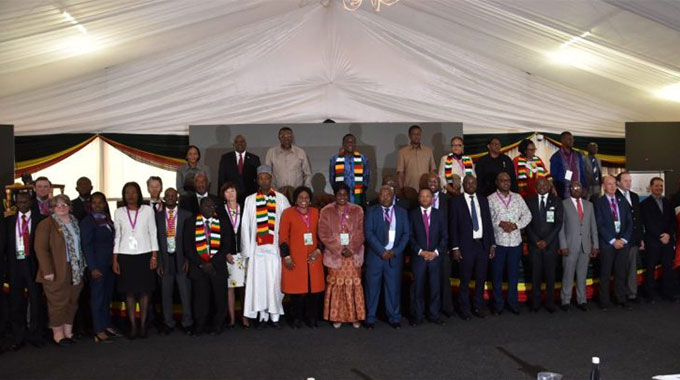Binga annexe schools — situation calls for urgent attention

A few have to make do with thatched structures that resemble classrooms. The school has no desks and chairs, no textbooks and most of the teachers are just temporary teachers.
The pupils most of the time have to sit on the floor and when its time for writing, they kneel so that they could access the makeshift desks made for them by their parents. This is one of the schools children in Binga District in Matabeleland North Province are attending.
They learn at annexe schools that were introduced in 2009 in a bid to reduce the distance children walked to the nearest school. Although the schools are much nearer unlike in the past when children had to walk about 10km or more to school, they remain undeveloped and as such compromise the quality of education.
A recent visit to Bunsiwa Primary School, an annexe school, was a heart rending experience. Children have to endure unfavourable weather conditions and when it rains, they all move to one corner of the thatched classroom as it leaks badly.
They have no books to use, they have to kneel for long hours when writing and although they might not know it; their teachers are not the best they must have.
The education system in rural Binga is under threat and more needs to be done to ensure that the children learning at annexe schools in the area receive an education they deserve.
There is urgent need to overhaul the whole system if children are to enjoy their right to education.
Mr Amos Mnkuli, a teacher said the introduction of annexe schools was a noble idea because children used to walk long distances to the nearest school.
He said due to long distances there were many risks that pupils faced such as being abused along the way, drowning while attempting to cross flooded rivers.
Mr Mnkuli said some pupils completely stopped attending school during the rainy season.
He said having addressed the issue of long distances by establishing the new schools, Government and the local authority should now develop the infrastructure at the schools which include classrooms and teachers houses.
“Annexe schools have been helpful in terms of reducing the number of kilometres children had to walk to school. The problem now is infrastructure and learning materials. It becomes difficult to teach in such an environment and expect pupils to perform.
“At the end of the day, we do not expect much from our pupils,” he said.
Mr Mnkuli said the quality of education was compromised because the learning environment was not conducive and what worsened the situation was that there were not textbooks and other learning materials.
“I cannot do my best without the teaching materials. My pupils do not have books and their learning environment is not conducive. Pupils have to kneel on the floor and use these makeshift desks for writing. The situation is just difficult for both teachers and pupils,” he said,” he said.
Bunsiwa Primary School has an enrolment of 244 pupils, six teachers and offers Grade One to Grade Six classes. There is no Grade Seven class yet. Pupils pay $10 school fees per term.
Mirriam (12), a Grade Five pupil at the school said she moved to the school when she was doing Grade Two. She said there was urgent need to build more classes, provide furniture as well as textbooks.
“It is painful writing while kneeling. We also need desks and chairs. We would also like modern classrooms not these thatched structures,” she said.
Due to the poor learning environment, the children at the annexe schools generally fail to perform to the best of their abilities. Some just go to school and go back home without learning anything.
Eugene (13), another pupil at the school said they needed proper learning materials.
He said they also needed sporting equipment since sport was part of their curriculum.
“We need learning materials. I play soccer and we also need soccer balls and a soccer kit,” he said.
Mr December Mwinde, a teacher at the school said they desperately needed help to build infrastructure at the school.
“This would benefit the pupils very much. Teaching them might also be a little easier,” he said.
Mr Mwinde said because there was only one classroom at the school, the children had to alternate using it. When a certain class occupies the classroom, other pupils will be attending classes under trees.
Many of the pupils do not have uniforms and come to school bare-footed.
Provincial Education Director for Matabeleland North Province, Mrs Boithatelo Mguni said efforts were being made to make annexe schools as user friendly as possible.
She however, said the task of developing annexe schools should not be left to the Ministry of Education, Sport, Arts and Culture alone.
“We are hoping to get help from other stakeholders as well. The Constituency Development Fund would also go a long way in developing these schools,” she said.
Mrs Mguni said parents with children learning at the schools had also been contributing to their development.
“Parents are working hard and they are really trying to develop these schools,” she said.







Comments